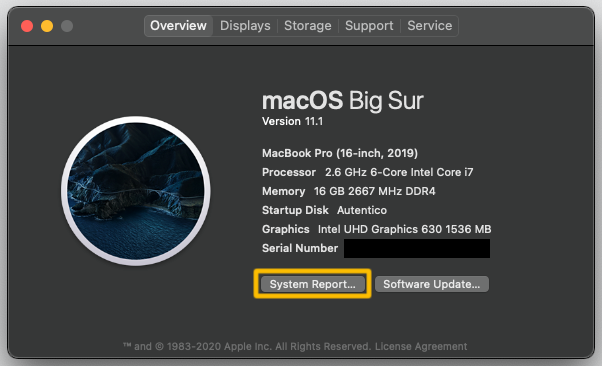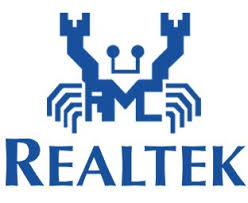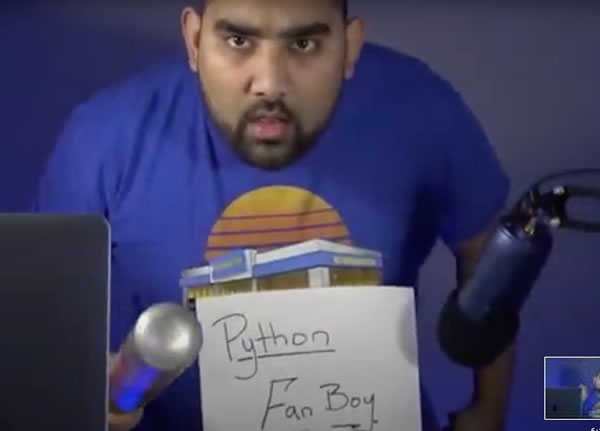
Welcome to the second week of 2021! Here’s your list of tech, entrepreneur, and nerd events for the Tampa Bay area for the week of Monday, January 11 through Sunday, January 17, 2020.

By “Tampa Bay”, this list covers events that originate or are aimed at the area within 100 miles of the Port of Tampa. At the very least, that includes the cities of Tampa, St. Petersburg, and Clearwater, but as far north as Ocala, as far south as Fort Myers, and includes Orlando and its surrounding cities.
For the time being, this list will include only those events that can be attended online because…
- 1 in 15 Americans has contracted COVID-19 (22.3 million cases out of a population of 328 million)
- 1 in 880 Americans has died from COVID-19 (373,000 dead out of a population of 328 million)
…and we’re experiencing a post-holiday spike that has a number of ICUs across the country running at maximum capacity.
We live in the age of broadband and ubiquitous computing — make the best use of it. Stay safe, stay connected, skill up, and #MakeItTampaBay!
This week’s events
Monday, January 11
- Tampa Bay Tech Career Advice Forum — Job Seeker Coffee Talk @ 9:00 AM to 10:00 AM EST
- Professional Business Networking with RGAnetwork.net — RGA Top Professional Business Networking Tampa Bay & surrounding areas~ @ 11:30 AM to 1:00 PM EST
- Entrepreneurs Empower Empire — Official Meeting-2021 Best Year in Your Business @ 11:30 AM to 1:30 PM EST
- Success Strategies for Business Owners — How to develop your Unique Selling Proposition @ 12:00 PM to 1:00 PM EST
- Business Networking and Other Events — Business Plan Collaboration Space @ 12:00 PM to 1:00 PM EST
- Orlando Melrose Makers — Virtual Event: DIY Microphone Build @ 2:00 PM to 3:30 PM EST
- Tampa Bay Investors & Traders — Stocktwits Meetups — Winning Wall Streets Money with Stocks, Futures, Options, Forex, Cryptocurrency @ 5:00 PM to 7:00 PM EST
- Game On – Gaming — Pathfinder – Final Fantasy 7 @ 6:00 PM to 9:00 PM EST
- Tampa Bay Thinkers — Predictions for 2021: What will happen politically, with Covid 19, culturally? @ 7:00 PM to 9:00 PM EST
- Orlando Stoics — TAOISM and WU WEI (Part 2) @ 7:00 PM to 8:30 PM EST
- Nerdbrew Events — Anime Watch Party @ 7:00 PM to 10:00 PM EST
- Orlando Adventurer’s Guild — Curse of Strahd (Tier 1) @ 7:00 PM to 10:00 PM EST
- Library Book Clubs – OCLS — Virtual Event: Southeast Book Club @ 7:00 PM to 8:00 PM EST
- Toastmasters District 48 — Get Outta UR Comfort Zone Every Monday night Zooming with Us FUN Toastmasters! @ 7:00 PM to 8:15 PM EST
- Thinkful Tampa | Careers in Tech — Thinkful Webinar | Free Crash Course: HTML & CSS @ 9:00 PM to 11:00 PM EST
Tuesday, January 12
- Young Professionals of Tampa Bay Networking Group — Carrolwood Networking Breakfast @ 7:30 AM to 9:00 AM EST
- Pinellas/Pasco/Hillsborough/Polk/Manatee Business Meetups — Business over Breakfast Largo/Seminole Virtually @ 7:30 AM to 9:00 AM EST
- Suncoast Credit Union Micro Enterprise Development Meetup — Operation HOPE: Credit and Money Management @ 9:30 AM to 10:30 AM EST
- Tampa Bay Tech Career Advice Forum — 4 Key Strategies to Landing Your Next Job @ 10:00 AM to 11:30 AM EST
- Toastmasters District 48 — Westshore Toastmasters @ 12:00 PM to 1:00 PM EST
- Orlando Unity Developers Group — 👨🎓 Build your first FPS Level – Part 1 🎨 👀 @ 1:00 PM to 2:00 PM EST
- Orlando Melrose Makers — Virtual Event: DIY Audio Cable Soldering @ 2:00 PM to 3:30 PM EST
- BOSS CEOs Tampa — 💻 [ONLINE] BOSS TALK TUESDAYS (2pm EST) @ 2:00 PM to 3:00 PM EST
- Florida Podcasters Association — Florida Podcasters Association General Meeting!!! @ 6:00 PM to 7:30 PM EST
- Orlando Adventurer’s Guild — Tier 1 Tuesdays – CCC-UNITE-04 Sisterhood of the Blade @ 6:00 PM to 10:00 PM EST
- Agile Mindset Book Club — Coaching Agile Teams by Lyssa Adkins, Book Club Discussion @ 6:00 PM to 7:30 PM EST
- Tampa Hackerspace — Online Weekly Open Make Night @ 6:00 PM to 10:00 PM EST
- West Pasco Toastmasters Club #2824 — Weekly Meeting @ 6:30 PM to 8:00 PM EST
- Florida Gulf Coast Chapter of Sisters in Crime — Webinar: The Psychology of Interviewing & Interrogation w/Dr. Katherine Ramsland @ 7:00 PM to 8:30 PM EST
- Brandon Boardgamers — Board Gaming – ONLINE ONLY @ 7:00 PM to 9:00 PM EST
- St Pete .NET Meetup — Authentication in Blazor with Fahad Mullaji @ 7:00 PM to 9:00 PM EST
- Tampa Bay Technology Center — Web Entrepreneurs @ 7:00 PM to 9:00 PM EST
- Suncoast Developers Guild — Code Katas Meetup @ 7:00 PM to 9:30 PM EST
- St. Pete Writers Guild — St. Pete Writers Guild: Storytelling Round Table @ 7:30 PM to 9:30 PM EST
- Shut Up & Write!® Tampa — Online Event: Shut Up & Write on Zoom @ 7:45 PM to 9:15 PM EST
- Nerdbrew Events — Tampa Board Games Online @ 8:00 PM to 10:00 PM EST
- Thinkful Tampa | Careers in Tech — Thinkful Webinar | Intro to Data Science: The Art of Visualizations @ 9:00 PM to 11:00 PM EST
Wednesday, January 13
- Networking 4 Profit — VIRTUAL Referral Networking Meeting @ 7:30 AM to 9:00 AM EST
- 1 Million Cups:
- Tampa Bay Investors & Traders — Stocktwits Meetups — Winning Wall Streets Money with Stocks, Futures, Options, Forex, Cryptocurrency @ 11:00 AM to 1:00 PM EST
- Adult Craft Club – OCLS — Virtual Event: South Creek Social Crafters Meetup @ 11:00 AM to 12:00 PM EST
- Wesley Chapel Young Entrepreneurs Meetup — Virtual Networking Lunch @ 11:30 AM to 1:00 PM EST
- Business Networking Re-Mix — Business Networking Re-Mix Zoom @ 11:30 AM to 1:00 PM EST
- Wesley Chapel, Trinity, New Tampa Business Professionals — Lutz, Wesley Chapel, New Tampa Virtual Networking Lunch @ 11:30 AM to 1:00 PM EST
- Young Professionals of Tampa Bay Networking Group — Wesley Chapel Networking Lunch Virtual @ 11:30 AM to 1:00 PM EST
- Business to Business Networking Group — B2B Online Networking Event @ 12:00 PM to 1:15 PM EST
- Tampa Bay Agile — Heart of Agile Weekly Coffee Corner @ 12:30 PM to 1:45 PM EST
- Free Video Production Classes – TV/Internet — Digital Video Editing Class (ONLINE CLASS) -FREE for Hillsborough residents only @ 1:00 PM to 3:00 PM EST
- Tampa Bay DevOps — Tampa Bay DevOps Kick Off – Automate CIS Benchmark Assessment Using DevSecOps @ 4:30 PM to 6:00 PM EST
- Tampa Bay Business Networking Happy Hour- Meet Up — SPEED NETWORKING VIRTUAL Wednesday’s 5pm to 7pm @ 5:00 PM to 7:00 PM EST
- Tampa Bay Connections — Virtual Speed Networking Happy Hour! @ 5:00 PM to 7:00 PM EST
- Professional Business Networking with RGAnetwork.net — Virtual Speed Networking Wednesday 5pm to 7pm ~ BYOB Connect & Collaborate @ 5:00 PM to 7:00 PM EST
- Orlando Adventurer’s Guild — Adventuring 331: Journies to the Beyond (Tier 3, APL 11) Historic Campaign @ 6:00 PM to 10:00 PM EST
- Tampa Bay Full Stack Meetup — Tampa Bay Full Stack Meetup @ 6:00 PM to 7:30 PM EST
- Tampa Bay Agile — Product Owner Group – Jan: Stakeholder Mgt–Tips from FBI Hostage Negotiators @ 6:00 PM to 8:00 PM EST
- Toastmasters, Division D — Electric Toasters Club @ 6:30 PM to 7:30 PM EST
- Tampa Bay Inventors Council – www.TampaBayInventors.org — Tampa Bay Inventors Council – www.tbic.us Weekly Meetup @ 6:30 PM to 8:00 PM EST
- Tampa Writers Alliance — Tampa Writers Alliance Critique Group @ 6:30 PM to 8:30 PM EST
- Suncoast Developers Guild — Open Code @ 7:00 PM to 9:00 PM EST
- Florida Writer’s Association / Orlando — Florida Writer’s Association / Orlando @ 7:00 PM to 8:00 PM EST
- Toastmasters District 48 — Carrollwood Toastmasters Meetings now conducted Online using Zoom @ 7:00 PM to 8:30 PM EST
- The Suncoast Linux Users Group — SLUG – Tampa @ 7:00 PM to 9:00 PM EST
- Orlando 3D Printing Meetup — 2nd Wednesdays: 3D Printing Basics @ 7:00 PM to 9:00 PM EST
- Writers of Central Florida or Thereabouts — Short Attention Span Storytelling monthly open mic @ 7:00 PM to 9:00 PM EST
- Central Florida AD&D (1st ed.) Grognards Guild — New Beginnings & Old Rivalries @ 7:00 PM to 10:30 PM EST
- Nerdbrew Events — Tampa Call of Duty Warzone Free-for-all with USF Esports @ 7:00 PM to 11:00 PM EST
- Tampa Startup Businesses Meetup Group — 5 minute Zoom and welcome meeting (Virtual) @ 7:00 PM to 8:00 PM EST
- MakerFX Makerspace — Orlando 3D Printing Meetup @ 7:00 PM to 9:00 PM EST
- The Orlando Writers Meetup Group — Orlando Writer’s Meetup Group meets via Zoom monthly. @ 7:00 PM to 8:00 PM EST
- Broward Drupal Users Group — Call for presenters @ 7:00 PM to 9:00 PM EST
- Apopka Foliage Toastmasters — Apopka Foliage Toastmasters @ 7:00 PM to 8:30 PM EST
Thursday, January 14
- Tampa Bay Connections — Business over Breakfast Tampa Bay @ 7:30 AM to 9:00 AM EST
- Professional Business Networking with RGAnetwork.net — Downtown St Pete Networking Virtually JOIN us @ 7:30 AM to 9:00 AM EST
- Temple Terrace Biz Pros — Build your business with TT Biz Pros @ 8:30 AM to 10:00 AM EST
- Tampa Bay Investors & Traders — Stocktwits Meetups — Winning Wall Streets Money with Stocks, Futures, Options, Forex, Cryptocurrency @ 11:00 AM to 1:00 PM EST
- Tampa Bay Tech Career Advice Forum — The Job Seekers Lunch Hour @ 12:00 PM to 1:00 PM EST
- Toastmasters District 48 — Telecom Park Toastmasters #6745 @ 12:00 PM to 1:00 PM EST
- Tampa Startup Founder 101 — Online Startup Idea Fest: Build and Share Ideas with Potential Customers @ 1:00 PM to 2:00 PM EST
- Free Video Production Classes – TV/Internet — Social Video Marketing Tips(ONLINE CLASS)-FREE for Hillsborough County Residents @ 4:15 PM to 5:15 PM EST
- Entrepreneurs & Startups – Bradenton Networking & Education — New After Hours Founders’ Series – Meet David Cook @ 5:30 PM to 7:30 PM EST
- Tampa Bay Agile — Lean Beer for All Things Agile (St Petersburg) @ 6:00 PM to 7:30 PM EST
- WP Bloggers and Social Media Meetup — Introduction to Social Media Marketing @ 6:00 PM to 8:00 PM EST
- Orlando Lady Developers Meetup — Member meet & greet! (evening) @ 7:00 PM to 8:00 PM EST
- Brandon Boardgamers — Board Gaming – ONLINE ONLY @ 7:00 PM to 9:00 PM EST
- Library Book Clubs – OCLS — Virtual Event: Alafaya Book Club @ 7:00 PM to 8:00 PM EST
- Tampa Hackerspace — ONLINE Five Weeks of Arduino Goodness (week 1) @ 7:00 PM to 9:00 PM EST
- Tampa Bay Thinkers — Predictions for 2021: What will happen politically, with Covid 19, culturally? @ 7:00 PM to 9:00 PM EST
- Virtual Orlando Crypto-Growing for Newbies Club — Start Growing Crypto Today Safely Without Risk! @ 8:30 PM to 10:30 PM EST
Friday, January 15
- Agile Orlando — REMOTE – Lean Coffee Orlando (Baldwin Park/Winter Park) @ 7:30 AM to 8:30 AM EST
- Professional Business Networking with RGAnetwork.net — RGA Top Professional Business Networking Tampa Bay & surrounding areas~ @ 11:30 AM to 1:00 PM EST
- Wesley Chapel, Trinity, New Tampa Business Professionals — Odessa Networking Lunch Virtually @ 11:30 AM to 1:00 PM EST
- Tampa Bay UX Group — Partner Event – IxDA Charlotte – FusionConf UX @ HOME EDITION @ 1:00 PM to 5:00 PM EST
- Tampa Bay Investors & Traders — Stocktwits Meetups — Winning Wall Streets Money with Stocks, Futures, Options, Forex, Cryptocurrency @ 1:00 PM to 3:00 PM EST
- Kajabi Users Meetup — Building Your Website With Kajabi Pages @ 3:00 PM to 5:00 PM EST
- Meeple Movers Gaming Group — Let’s Play Games ONLINE on Fridays! @ 5:30 PM to 8:30 PM EST
- MakerFX Makerspace — Virtual Open Make – Friday Nights @ 5:30 PM to 8:30 PM EST
- Orlando Stoics — ONLINE: Handbook for New Stoics (Parts 19-20) @ 7:00 PM to 8:30 PM EST
- Central Florida AD&D (1st ed.) Grognards Guild — SKYPE AD&D 1E CAMPAIGN – PROTECTORS OF THE REALM! @ 7:00 PM to 11:00 PM EST
- World Of Darkness RPG Meetup — Mage 20th: The Magick Throne @ 7:00 PM to 10:00 PM EST
Saturday, January 16
- Toastmasters Division E — Hunters Creek Toastmasters @ 9:30 AM to 11:00 AM EST
- Tampa Drones Meetup — Beginner Drone Pilot Class @ 10:00 AM to 11:00 AM EST
- Orlando Lady Developers Meetup — Member meet & greet! (afternoon) @ 12:00 PM to 1:00 PM EST
- Tampa Bay Women’s Book Club Meetup Group — Online January Book club @ 1:00 PM to 3:00 PM EST
- Tampa Bay Investors & Traders — Stocktwits Meetups — Winning Wall Streets Money with Stocks, Futures, Options, Forex, Cryptocurrency @ 1:00 PM to 3:00 PM EST
- Tampa Hackerspace — Online Microcontroller Monthly Meetup (M3) @ 3:00 PM to 5:00 PM EST
- Socrates Cafe – “The unexamined life is not worth living” — What Effect Is Social media Having On Us? @ 3:00 PM to 5:00 PM EST
- Orlando GoalGetters — Virtual Vision Board Workshop- Create the Life You Want @ 5:00 PM to 6:30 PM EST
- Orlando Adventurer’s Guild — OAG Dungeon of the Mad Mage Lvl#1 -“Dungeon Level”- DM Doug (Session 2) @ 6:00 PM to 10:02 PM EST
- Tampa Hackerspace — Tampa Hackerspace Monthly Board Game Night (Online) @ 7:00 PM to 11:00 PM EST
Sunday, January 17
- Dialogue and Human Experience. — Consciousness and Perception @ 2:00 PM to 4:00 PM EST
- Women’s 20s-30s Book Club — The Guest List Book Discussion @ 3:00 PM to 5:00 PM EST
Do you have any events or announcements that you’d like to see on this list?
Let me know at joey@joeydevilla.com!
Join the mailing list!
If you’d like to get this list in your email inbox every week, enter your email address below. You’ll only be emailed once a week, and the email will contain this list, plus links to any interesting news, upcoming events, and tech articles.
Join the Tampa Bay Tech Events list and always be informed of what’s coming up in Tampa Bay!


























